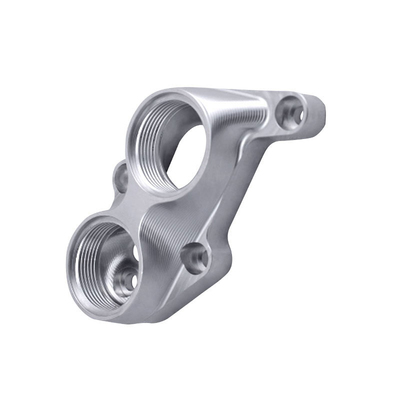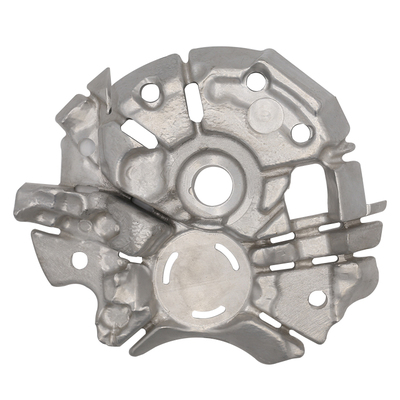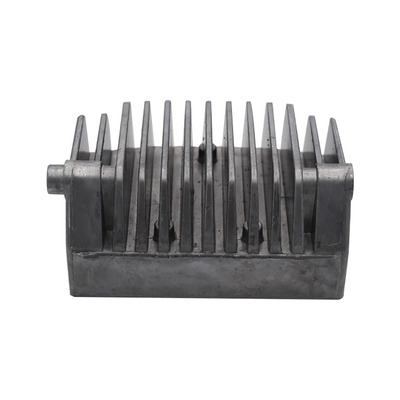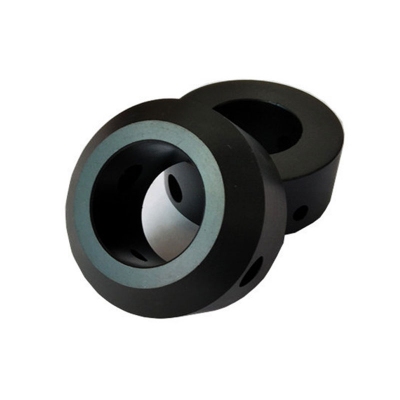Evolution Mechanism of Delamination Damage and Fault Suppression Process Strategy in CNC Machining of Aviation Composite Laminated Structure Metal (Titanium Alloy + Carbon Fiber)
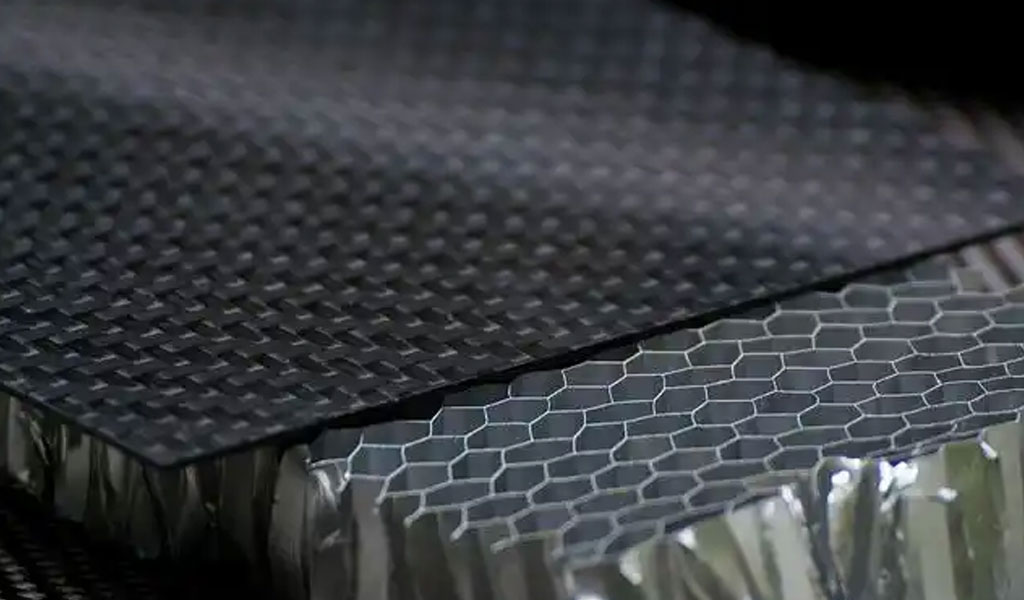
Composite laminated structures, particularly those integrating carbon fiber reinforced polymers (CFRP) with titanium alloys, are integral to modern aerospace engineering due to their high strength-to-weight ratio, corrosion resistance, and fatigue performance. These hybrid materials, often referred to as CFRP/Ti stacks, are employed in critical aircraft components such as wing skins, fuselage panels, and engine mounts. However, the machining of these structures, especially through computer numerical control (CNC) processes like drilling, milling, and trimming, poses significant challenges due to the disparate mechanical and thermal properties of CFRP and titanium alloys. Among the most critical issues is delamination, a failure mode where layers of the composite separate, compromising structural integrity.
Delamination damage in CFRP/Ti stacks arises from complex interactions between tool geometry, machining parameters, material anisotropy, and thermal-mechanical effects. The evolution of this damage is governed by mechanisms such as fiber-matrix debonding, interlayer cracking, and thermal degradation induced by high-temperature titanium chips. Fault suppression strategies aim to mitigate these issues through optimized tool design, advanced machining techniques, and process parameter control. This article provides a comprehensive exploration of the evolution mechanism of delamination damage and fault suppression strategies in CNC machining of aviation CFRP/Ti laminated structures, supported by detailed tables for comparative analysis.
## Material Properties of CFRP and Titanium Alloys
### Carbon Fiber Reinforced Polymers (CFRP)
CFRP consists of carbon fibers embedded in a polymer matrix, typically epoxy, offering exceptional tensile strength, stiffness, and low density. The mechanical properties of CFRP are highly anisotropic, with strength and stiffness maximized along the fiber direction. Common CFRP configurations in aerospace include unidirectional, woven, and multidirectional laminates, each with distinct machining behaviors.
- **Tensile Strength**: Up to 3,500 MPa along fiber direction.
- **Young's Modulus**: 230–400 GPa along fiber direction.
- **Density**: 1.5–1.8 g/cm³.
- **Thermal Conductivity**: Low, typically 0.5–5 W/m·K.
- **Glass Transition Temperature**: 120–180°C for epoxy matrices.
The heterogeneity of CFRP leads to machining challenges, including fiber pull-out, matrix cracking, and delamination, particularly at the entrance and exit of machined holes.
### Titanium Alloys
Titanium alloys, such as Ti6Al4V, are prized in aerospace for their high strength, corrosion resistance, and ability to withstand elevated temperatures. However, their low thermal conductivity and high chemical reactivity with cutting tools make them difficult to machine.
- **Tensile Strength**: 900–1,200 MPa.
- **Young's Modulus**: 110–120 GPa.
- **Density**: 4.4–4.5 g/cm³.
- **Thermal Conductivity**: 6–7 W/m·K.
- **Melting Point**: ~1,650°C.
During CNC machining, titanium alloys generate high cutting temperatures and produce continuous chips that can damage adjacent CFRP layers, exacerbating delamination.
### CFRP/Ti Stacks
CFRP/Ti stacks combine the lightweight properties of CFRP with the durability of titanium, forming hybrid structures that are mechanically fastened (e.g., bolted or riveted) in aircraft assemblies. The mismatch in mechanical and thermal properties between CFRP and titanium complicates machining, as tools optimized for one material may underperform on the other. Table 1 compares the key properties of CFRP and Ti6Al4V.
**Table 1: Comparison of Material Properties for CFRP and Ti6Al4V**
| Property | CFRP (Unidirectional) | Ti6Al4V |
|--------------------------|-----------------------|--------------------|
| Tensile Strength (MPa) | 2,500–3,500 | 900–1,200 |
| Young's Modulus (GPa) | 230–400 | 110–120 |
| Density (g/cm³) | 1.5–1.8 | 4.4–4.5 |
| Thermal Conductivity (W/m·K) | 0.5–5 | 6–7 |
| Thermal Expansion (10⁻⁶/K) | ~0 (fiber direction) | 8.6–9.0 |
| Hardness | Low (matrix-dependent) | 330–380 HV |
## Delamination Damage in CNC Machining
### Definition and Significance
Delamination is the separation of layers within a laminated composite, resulting from interlaminar stresses exceeding the material's interlayer strength. In CFRP/Ti stacks, delamination manifests as peel-up (at the entrance) or push-out (at the exit) defects, reducing fatigue life and compromising fastener performance. Delamination is particularly detrimental in aerospace, where structural reliability is paramount.
### Types of Delamination
Delamination in CFRP/Ti stacks can be classified into three types based on the ASTM D5528 standard and experimental observations:
1. **Type I (Peel-Up Delamination)**: Occurs at the entrance due to upward thrust forces from the drill, causing the top layers to lift.
2. **Type II (Push-Out Delamination)**: Occurs at the exit due to unsupported layers bending under axial forces.
3. **Type III (Thermal-Induced Delamination)**: Results from high-temperature titanium chips softening the CFRP matrix, reducing interlaminar strength.
### Factors Influencing Delamination
Delamination is influenced by multiple factors, including:
- **Tool Geometry**: Drill point angle, helix angle, and edge sharpness affect thrust force and chip formation.
- **Machining Parameters**: Feed rate, spindle speed, and cutting speed determine cutting forces and heat generation.
- **Material Anisotropy**: Fiber orientation (e.g., 0°, 45°, 90°) impacts resistance to interlayer separation.
- **Thermal Effects**: Titanium's low thermal conductivity leads to heat accumulation, degrading the CFRP matrix.
- **Support Conditions**:
Reprint Statement: If there are no special instructions, all articles on this site are original. Please indicate the source for reprinting:https://www.cncmachiningptj.com/,thanks!
 PTJ® provides a full range of Custom Precision cnc machining china services.ISO 9001:2015 &AS-9100 certified. 3, 4 and 5-axis rapid precision CNC machining services including milling, turning to customer specifications,Capable of metal & plastic machined parts with +/-0.005 mm tolerance.Secondary services include CNC and conventional grinding, drilling,die casting,sheet metal and stamping.Providing prototypes, full production runs, technical support and full inspection.Serves the automotive, aerospace, mold&fixture,led lighting,medical,bicycle, and consumer electronics industries. On-time delivery.Tell us a little about your project's budget and expected delivery time. We will strategize with you to provide the most cost-effective services to help you reach your target,Welcome to Contact us ( [email protected] ) directly for your new project.
PTJ® provides a full range of Custom Precision cnc machining china services.ISO 9001:2015 &AS-9100 certified. 3, 4 and 5-axis rapid precision CNC machining services including milling, turning to customer specifications,Capable of metal & plastic machined parts with +/-0.005 mm tolerance.Secondary services include CNC and conventional grinding, drilling,die casting,sheet metal and stamping.Providing prototypes, full production runs, technical support and full inspection.Serves the automotive, aerospace, mold&fixture,led lighting,medical,bicycle, and consumer electronics industries. On-time delivery.Tell us a little about your project's budget and expected delivery time. We will strategize with you to provide the most cost-effective services to help you reach your target,Welcome to Contact us ( [email protected] ) directly for your new project.

- 5 Axis Machining
- Cnc Milling
- Cnc Turning
- Machining Industries
- Machining Process
- Surface Treatment
- Metal Machining
- Plastic Machining
- Powder Metallurgy Mold
- Die Casting
- Parts Gallery
- Auto Metal Parts
- Machinery Parts
- LED Heatsink
- Building Parts
- Mobile Parts
- Medical Parts
- Electronic Parts
- Tailored Machining
- Bicycle Parts
- Aluminum Machining
- Titanium Machining
- Stainless Steel Machining
- Copper Machining
- Brass Machining
- Super Alloy Machining
- Peek Machining
- UHMW Machining
- Unilate Machining
- PA6 Machining
- PPS Machining
- Teflon Machining
- Inconel Machining
- Tool Steel Machining
- More Material

